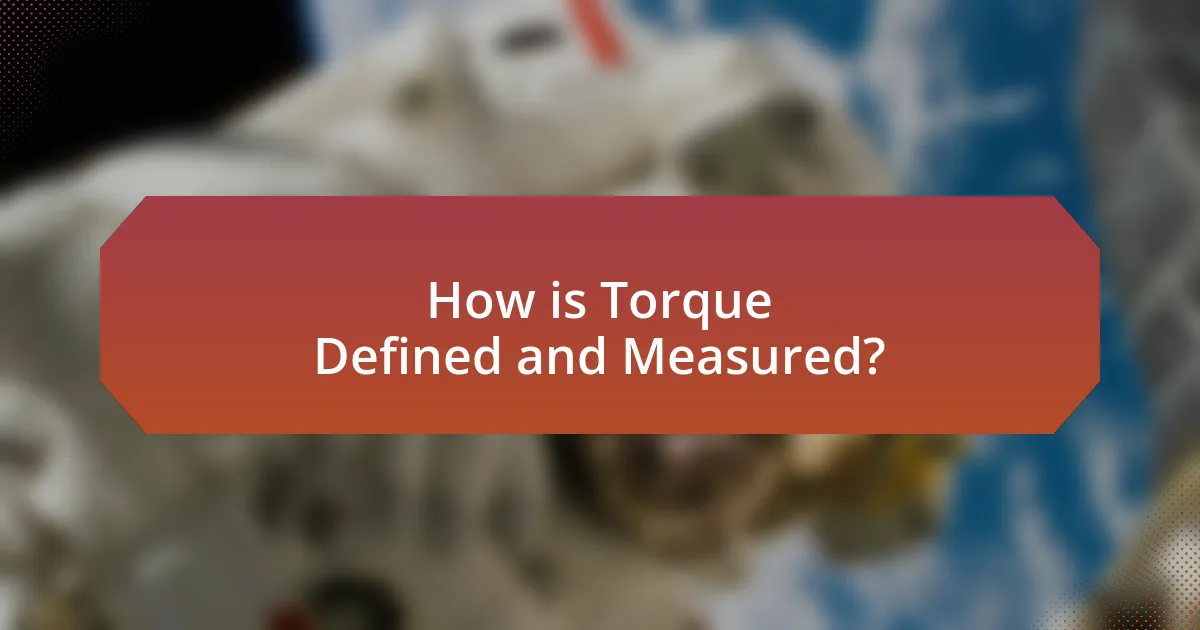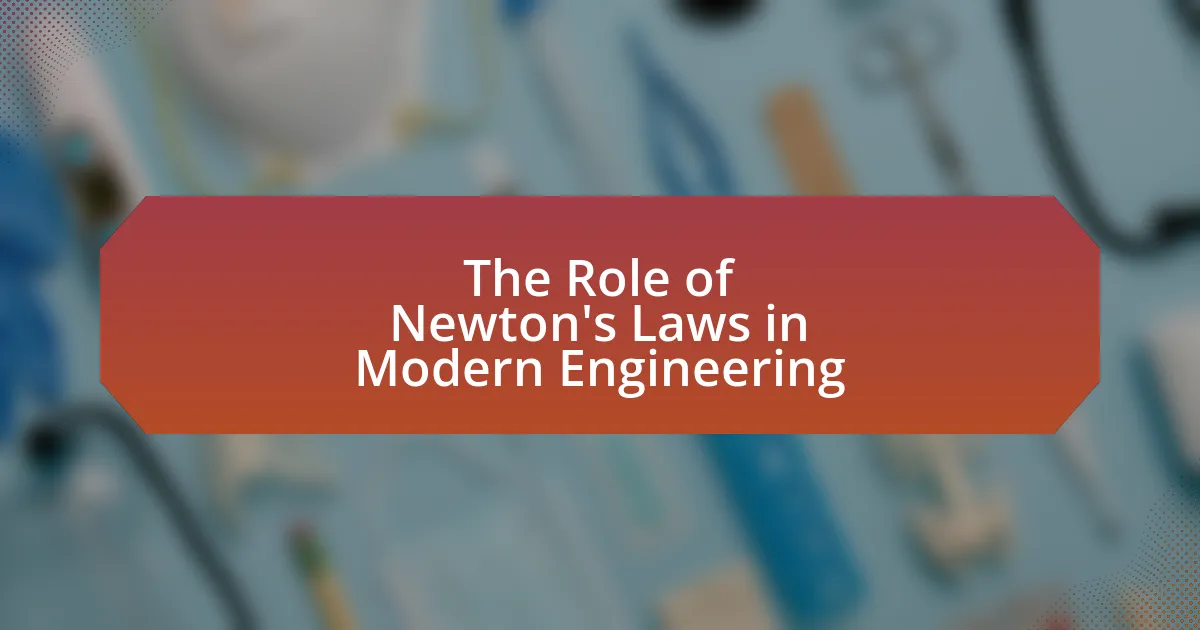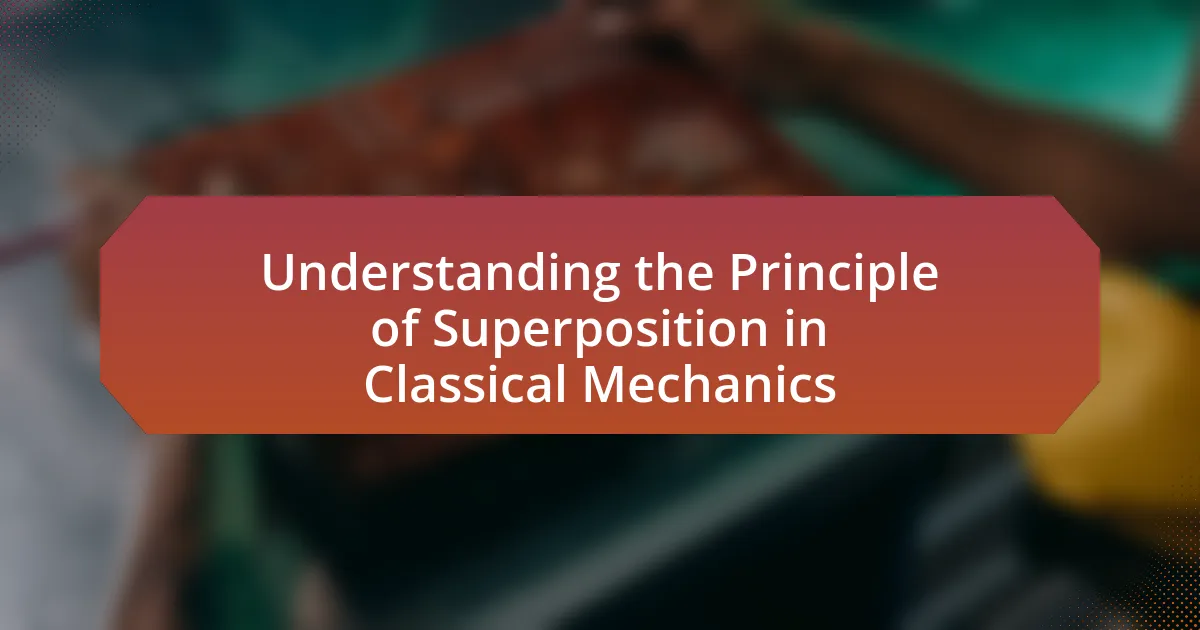Rotational dynamics is a critical branch of mechanics that examines the motion of rotating bodies and the forces that influence this motion, focusing on key concepts such as torque, angular momentum, and moment of inertia. This article explores the relationship between torque and angular momentum, detailing how torque is calculated and its significance in initiating rotational motion. It also discusses the conservation of angular momentum, its applications in various fields including engineering and sports, and the practical implications of these principles in real-world scenarios. Understanding rotational dynamics is essential for analyzing systems involving rotation, optimizing performance, and ensuring safety in engineering designs.

What are Rotational Dynamics and Their Importance?
Rotational dynamics is the branch of mechanics that deals with the motion of rotating bodies and the forces that cause this motion. It is crucial for understanding how objects behave when they rotate, as it encompasses concepts such as torque, angular momentum, and the moment of inertia. The importance of rotational dynamics lies in its applications across various fields, including engineering, physics, and robotics, where it helps in designing systems that involve rotational motion, such as engines, gears, and even celestial mechanics. For instance, the principles of rotational dynamics are applied in the design of gyroscopes, which are essential for navigation in aircraft and spacecraft.
How do Torque and Angular Momentum relate to Rotational Dynamics?
Torque and angular momentum are fundamental concepts in rotational dynamics, where torque is the measure of the force that causes an object to rotate, while angular momentum quantifies the rotational motion of that object. The relationship between the two is defined by the equation τ = dL/dt, where τ represents torque, L is angular momentum, and t is time. This equation indicates that the rate of change of angular momentum of an object is directly proportional to the torque applied to it.
For example, when a net torque is applied to a rotating object, it results in a change in its angular momentum, which is crucial in understanding how objects behave under rotational forces. This relationship is foundational in physics, as it helps explain phenomena such as the conservation of angular momentum in closed systems, where the total angular momentum remains constant if no external torque acts on the system.
What is Torque and how is it calculated?
Torque is a measure of the rotational force applied to an object, calculated using the formula Torque = Force × Distance × sin(θ), where Force is the applied force, Distance is the distance from the pivot point to the point of force application, and θ is the angle between the force vector and the lever arm. This relationship indicates that torque depends not only on the magnitude of the force but also on its application point and direction relative to the pivot. The unit of torque is Newton-meters (Nm), which quantifies the effectiveness of the force in causing rotational motion.
What is Angular Momentum and what factors influence it?
Angular momentum is a physical quantity that represents the rotational inertia and angular velocity of an object in motion around an axis. It is mathematically defined as the product of an object’s moment of inertia and its angular velocity, expressed as L = Iω, where L is angular momentum, I is moment of inertia, and ω is angular velocity. Factors that influence angular momentum include the distribution of mass relative to the axis of rotation (moment of inertia), the speed of rotation (angular velocity), and external torques acting on the object. For example, a figure skater pulling in their arms reduces their moment of inertia, resulting in an increase in angular velocity, thereby conserving angular momentum.
Why is understanding Rotational Dynamics crucial in physics?
Understanding rotational dynamics is crucial in physics because it describes the motion of objects that rotate around an axis, which is fundamental to analyzing real-world systems. This area of study encompasses key concepts such as torque, angular momentum, and the moment of inertia, which are essential for predicting how objects will behave under various forces. For instance, the principles of rotational dynamics are applied in engineering to design stable structures and in mechanics to understand the motion of celestial bodies. The mathematical relationships governing these concepts, such as Newton’s laws for rotation, provide a framework for solving complex problems in both theoretical and applied physics.
How does Rotational Dynamics apply to real-world scenarios?
Rotational dynamics applies to real-world scenarios by governing the motion of objects that rotate around an axis, influencing various applications such as machinery, vehicles, and sports. For instance, in automotive engineering, the principles of torque and angular momentum are crucial for designing efficient engines and improving vehicle performance. The calculation of torque, which is the rotational equivalent of linear force, determines how effectively an engine can accelerate a vehicle. Additionally, in sports like gymnastics or diving, athletes utilize angular momentum to control their rotations in the air, allowing for precise landings. These applications demonstrate how understanding rotational dynamics is essential for optimizing performance and safety in various fields.
What are the implications of Rotational Dynamics in engineering?
Rotational dynamics significantly impacts engineering by influencing the design and analysis of mechanical systems involving rotation. Engineers must consider factors such as torque, angular momentum, and moment of inertia when developing machinery, vehicles, and structural components. For instance, in automotive engineering, understanding rotational dynamics is crucial for optimizing engine performance and vehicle stability, as it affects acceleration, braking, and handling. Additionally, in aerospace engineering, the principles of rotational dynamics are essential for the stability and control of aircraft and spacecraft, where precise calculations of rotational forces ensure safe and efficient operation. These implications underscore the necessity for engineers to apply rotational dynamics principles to enhance functionality, safety, and efficiency in various engineering applications.

How is Torque Defined and Measured?
Torque is defined as the measure of the rotational force applied to an object, calculated as the product of the force and the distance from the pivot point, expressed mathematically as τ = r × F, where τ represents torque, r is the distance from the pivot point to the point of force application, and F is the applied force. Torque is measured in units of Newton-meters (Nm) in the International System of Units (SI). This definition is supported by the principles of rotational dynamics, which indicate that the effectiveness of a force in producing rotation depends on both its magnitude and its distance from the axis of rotation.
What are the different types of Torque?
The different types of torque include static torque, dynamic torque, and frictional torque. Static torque refers to the torque applied to an object at rest, which does not cause any movement. Dynamic torque, on the other hand, is the torque applied to an object in motion, resulting in angular acceleration. Frictional torque arises from the resistance to motion between surfaces in contact, affecting the overall torque experienced by a system. Each type of torque plays a crucial role in understanding rotational dynamics and is essential for applications in engineering and physics.
How does Static Torque differ from Dynamic Torque?
Static torque refers to the torque applied to an object at rest, while dynamic torque pertains to the torque acting on an object in motion. Static torque is measured when the object is not rotating, indicating the force required to initiate movement or maintain equilibrium. In contrast, dynamic torque is associated with the rotational motion of an object, accounting for factors such as angular acceleration and resistance due to friction. The distinction is crucial in applications like machinery and vehicle dynamics, where understanding both types of torque is essential for effective design and operation.
What role does Torque play in rotational motion?
Torque is a measure of the rotational force applied to an object, playing a crucial role in initiating and changing its rotational motion. It determines how effectively a force can cause an object to rotate around an axis, with the magnitude of torque calculated as the product of the force applied and the distance from the axis of rotation (lever arm). For example, in a door, applying a force at the edge generates more torque than applying the same force near the hinges, illustrating how torque influences the ease of rotation.
What factors affect the magnitude of Torque?
The magnitude of torque is affected by three primary factors: the force applied, the distance from the pivot point (lever arm), and the angle at which the force is applied. Torque is calculated using the formula τ = r × F × sin(θ), where τ represents torque, r is the lever arm distance, F is the applied force, and θ is the angle between the force vector and the lever arm.
The applied force directly influences torque; greater force results in greater torque. The lever arm distance also plays a crucial role; a longer distance increases torque for the same amount of force. Additionally, the angle of application affects the effectiveness of the force in producing torque; forces applied perpendicular to the lever arm generate maximum torque, while parallel forces produce no torque.
How does the distance from the pivot point influence Torque?
The distance from the pivot point directly influences torque, as torque is calculated by the formula τ = r × F, where τ represents torque, r is the distance from the pivot point to the point of force application, and F is the applied force. Increasing the distance (r) enhances the torque produced for a given force, meaning that a longer lever arm results in greater rotational effectiveness. This relationship is evident in practical applications, such as using a longer wrench to loosen a bolt, where the increased distance from the pivot allows for greater torque and easier movement.
What is the significance of the angle in Torque calculations?
The angle in torque calculations is significant because it determines the effectiveness of the applied force in producing rotational motion. Torque is calculated using the formula τ = r × F × sin(θ), where τ represents torque, r is the distance from the pivot point to the point of force application, F is the magnitude of the force, and θ is the angle between the force vector and the lever arm. The sine function indicates that the torque is maximized when the angle is 90 degrees, meaning the force is applied perpendicularly to the lever arm. This relationship illustrates that varying the angle directly affects the amount of torque generated, which is crucial in applications such as machinery design and structural engineering, where optimal force application is necessary for efficiency and safety.

What is Angular Momentum and How is it Conserved?
Angular momentum is a physical quantity that represents the rotational inertia and angular velocity of an object in motion around an axis. It is mathematically defined as the product of an object’s moment of inertia and its angular velocity, expressed as L = Iω, where L is angular momentum, I is moment of inertia, and ω is angular velocity. Angular momentum is conserved in a closed system, meaning that if no external torques act on the system, the total angular momentum remains constant over time. This principle is supported by the conservation laws in physics, which state that in the absence of external forces, the total momentum (including angular momentum) of a system is conserved, as demonstrated in various physical scenarios such as spinning ice skaters who pull in their arms to spin faster.
How is Angular Momentum calculated in different systems?
Angular momentum is calculated using the formula L = r × p, where L represents angular momentum, r is the position vector from the axis of rotation to the point of interest, and p is the linear momentum of the object. In different systems, the calculation may vary slightly based on the context. For a point mass, angular momentum is determined by L = mvr, where m is mass, v is linear velocity, and r is the distance from the axis of rotation. For rigid bodies, angular momentum can be calculated using L = Iω, where I is the moment of inertia and ω is the angular velocity. In systems with multiple particles, the total angular momentum is the vector sum of the angular momentum of each particle. This approach is consistent with the principles of rotational dynamics, as outlined in classical mechanics.
What is the formula for Angular Momentum in rigid bodies?
The formula for Angular Momentum in rigid bodies is L = Iω, where L represents angular momentum, I is the moment of inertia, and ω is the angular velocity. This relationship defines how the angular momentum of a rigid body is dependent on its distribution of mass (moment of inertia) and its rotational speed (angular velocity). The moment of inertia varies based on the shape and mass distribution of the object, while angular velocity is the rate of rotation. This formula is fundamental in rotational dynamics, illustrating the conservation of angular momentum in closed systems.
How does Angular Momentum apply to particles in motion?
Angular momentum applies to particles in motion by quantifying the rotational motion of those particles around a specific axis. It is defined as the product of a particle’s moment of inertia and its angular velocity, expressed mathematically as L = Iω, where L represents angular momentum, I is the moment of inertia, and ω is the angular velocity. This relationship indicates that as a particle moves in a circular path, its angular momentum remains conserved in the absence of external torques, which is a fundamental principle in physics. For example, in a closed system, if a particle’s distance from the axis of rotation decreases, its angular velocity must increase to conserve angular momentum, demonstrating the interplay between these variables in dynamic systems.
Why is the conservation of Angular Momentum important?
The conservation of angular momentum is important because it allows for the prediction of the motion of rotating bodies in a closed system. This principle states that if no external torque acts on a system, the total angular momentum remains constant. For example, in figure skating, when a skater pulls in their arms, they spin faster due to the conservation of angular momentum, demonstrating how changes in distribution of mass affect rotational speed. This principle is foundational in physics, influencing various fields such as astrophysics, engineering, and biomechanics, where understanding rotational dynamics is crucial for analyzing systems and designing applications.
What are some examples of Angular Momentum conservation in nature?
Angular momentum conservation is observed in various natural phenomena, including the rotation of planets, the behavior of spinning ice skaters, and the dynamics of galaxies. For instance, as a planet orbits a star, it maintains its angular momentum, which is crucial for its stable orbit. Similarly, when an ice skater pulls in their arms while spinning, they reduce their moment of inertia, causing their rotation speed to increase, demonstrating the conservation of angular momentum. In galaxies, the rotation of stars and gas clouds conserves angular momentum, influencing their formation and evolution. These examples illustrate how angular momentum conservation is a fundamental principle governing motion in the universe.
How does Angular Momentum conservation apply in sports and engineering?
Angular momentum conservation is crucial in both sports and engineering as it dictates the motion and stability of rotating bodies. In sports, athletes utilize angular momentum to enhance performance; for example, a figure skater pulls in their arms to spin faster, conserving angular momentum while reducing their moment of inertia. In engineering, the principle is applied in the design of rotating machinery, such as flywheels, where maintaining angular momentum ensures efficiency and stability during operation. These applications demonstrate the fundamental role of angular momentum conservation in optimizing performance and safety in dynamic systems.
What are practical applications of Torque and Angular Momentum?
Torque and angular momentum have several practical applications across various fields. In engineering, torque is crucial for designing engines and machinery, as it determines the rotational force needed to perform work, such as in automotive applications where torque affects acceleration and power output. Angular momentum is essential in aerospace engineering, particularly in spacecraft maneuvering, where it helps maintain orientation and stability during flight.
In sports, torque is applied in activities like gymnastics and diving, where athletes utilize rotational forces to execute complex maneuvers. Additionally, angular momentum plays a significant role in the design of gyroscopes, which are used in navigation systems for ships and aircraft, ensuring accurate positioning and stability. These applications demonstrate the importance of understanding torque and angular momentum in both practical and theoretical contexts.
How is Torque utilized in automotive engineering?
Torque is utilized in automotive engineering primarily to measure the rotational force produced by an engine, which directly influences vehicle performance. This rotational force is essential for various functions, including accelerating the vehicle, climbing hills, and towing loads. For instance, the torque output of an engine is a critical specification that determines how effectively a vehicle can perform under different driving conditions, with higher torque values generally indicating better acceleration and towing capacity. Additionally, torque is crucial in the design of transmission systems, where it is used to optimize gear ratios for efficient power delivery to the wheels.
What role does Angular Momentum play in aerospace technology?
Angular momentum is crucial in aerospace technology as it governs the rotational motion of spacecraft and aircraft. It influences stability, control, and maneuverability during flight. For instance, the conservation of angular momentum is fundamental in spacecraft attitude control, allowing for precise orientation adjustments without expending fuel. This principle is applied in systems like reaction wheels and gyroscopes, which utilize angular momentum to maintain or change a spacecraft’s orientation effectively. The successful deployment of satellites and the operation of space missions, such as those conducted by NASA and ESA, rely heavily on these principles, demonstrating the essential role of angular momentum in ensuring mission success and operational efficiency.
What best practices should be followed when studying Rotational Dynamics?
When studying Rotational Dynamics, it is essential to understand the fundamental concepts of torque and angular momentum. A best practice is to start with a solid grasp of Newton’s laws of motion, as they apply to rotational systems, which provides a foundation for analyzing rotational forces and motions. Additionally, utilizing diagrams to visualize forces and torques acting on objects enhances comprehension and problem-solving skills.
Engaging in hands-on experiments, such as using rotating objects to observe angular momentum conservation, reinforces theoretical knowledge through practical application. Furthermore, solving a variety of problems, including those that involve real-world scenarios, helps to deepen understanding and improve analytical skills.
Finally, collaborating with peers or seeking guidance from instructors can clarify complex topics and foster a deeper understanding of Rotational Dynamics principles. These practices collectively contribute to a comprehensive understanding of the subject.




